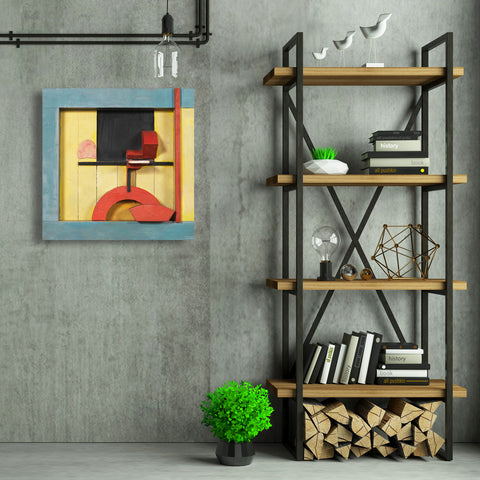Kurt SCHWITTERS

Kurt SCHWITTERS, Self-portrait.
Kurt SCHWITTERS – Godfather of Modern Text Art
Kurt SCHWITTERS (1887-1948) was one of the most fascinating modern artists, and one of the leaders of the Dada movement. (The name Dada first appeared in 1916, to define an irrational, provocative art that employed unorthodox techniques.) Schwitters used waste materials to build his first collages and assemblages which he would call Merz, a name derived from a fragment of the word “kommerz” that he had used in one of his collages. Merz became synonymous with the new multidisciplinary art, a blend of the Dadaist pursuit of irony and paradox through the transformation of objects and the Russian avant-gardes’ notion of art as construction.. Schwitters himself defined this artistic process as a consequence of the historic moment in which it had befallen him to live: “The Great War is over, in a certain manner the world is in ruins, and so I pick up its pieces, I build a new reality.”
Schwitters was more than a collagist — although, in that department, he was virtually peerless. He was also a poet, a sculptor, and a pioneering installation artist. Under pressure from the Nazis, in 1937, Schwitters was forced to leave Germany and settle in Norway. He left Norway after the German invasion in 1940 and lived in Ambleside, Lake District, North West England.. The artist died in January 1948 and was buried there, in Ambleside.

Kurt SCHWITTERS, Self-portrait.
Kurt SCHWITTERS – Godfather of Modern Text Art
Kurt SCHWITTERS (1887-1948) was one of the most fascinating modern artists, and one of the leaders of the Dada movement. (The name Dada first appeared in 1916, to define an irrational, provocative art that employed unorthodox techniques.) Schwitters used waste materials to build his first collages and assemblages which he would call Merz, a name derived from a fragment of the word “kommerz” that he had used in one of his collages. Merz became synonymous with the new multidisciplinary art, a blend of the Dadaist pursuit of irony and paradox through the transformation of objects and the Russian avant-gardes’ notion of art as construction.. Schwitters himself defined this artistic process as a consequence of the historic moment in which it had befallen him to live: “The Great War is over, in a certain manner the world is in ruins, and so I pick up its pieces, I build a new reality.”
Schwitters was more than a collagist — although, in that department, he was virtually peerless. He was also a poet, a sculptor, and a pioneering installation artist. Under pressure from the Nazis, in 1937, Schwitters was forced to leave Germany and settle in Norway. He left Norway after the German invasion in 1940 and lived in Ambleside, Lake District, North West England.. The artist died in January 1948 and was buried there, in Ambleside.



